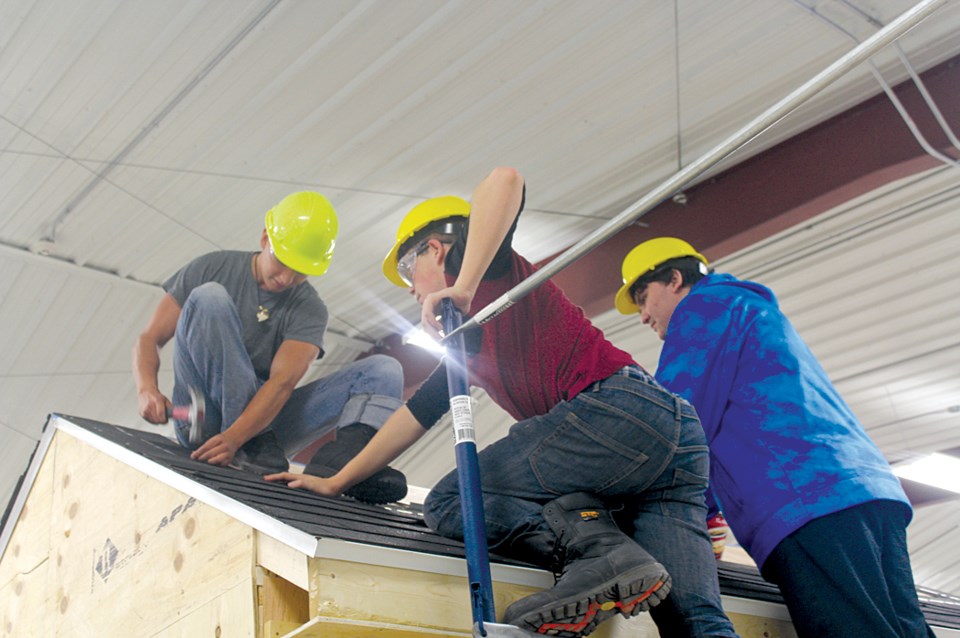Big things are being built at the Hapnot Collegiate wood shop.
A Grade 12 shop class is building large shacks, similar to those used for ice fishing, as a term project.
Work on the shacks is finishing up, with the five students in the class combining to complete two buildings. Everything from the roof supports to the skis the shacks are mounted on has been assembled by the students.
“We’ve been working since mid-September,” said student Jemedie Morris.
“We do a bunch of theory at the start, all the different methods, the studs, the cripples, the framing, the trimmers and all that, the joists for the floor, the gussets…all that.”
“If the rest of the country was wiped out, this building will stay standing,” said teacher Colin Davis.
Along with classmate Matthew Ellis, Morris has taken the standard shack blueprint and altered it slightly, building a sauna on skis instead of a traditional ice shack.
“We made one last year. It was such a success and we had such a good time doing it that we decided to do one more,” said Davis.
The class aims to provide students with valuable experience before entering apprenticeships or school programs.
“I’m going to try to go to school for carpentry — this will be very helpful for me,” said Ellis.
The building process isn’t always perfect. Ellis and Morris experienced some hiccups while putting plywood sheets on the roof of their project.
“Either there were small gaps or it was a little bit crooked. We had to pull it up, rearrange it, fix the gaps and everything,” said Ellis.
As part of the class, students can sell the shacks to members of the community or buy them themselves at a reduced rate. The buildings are all sold at cost.
“We don’t want to be accused of running a business,” said Davis.
A key component of the program is teaching the young builders vital points of carpentry and theory. The first few weeks of the class are not taught from a textbook – they’re taught with practical experimentation.
“The theory is extensive at the beginning. They get put through their paces, there’s a lot to learn. It’s all needed,” said Davis.
“Instead of giving them a textbook, I’ve gone through everything, taken out the meat and potatoes and given them that. Everything that’s on the page is taught – there’s no fluff. There’s a learning curve.”




